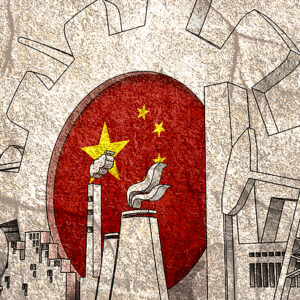It is always tempting to be gloomy about China’s domination of the world’s mineral supply. China is the top producer of two-thirds of the minerals that the U.S government deems critical. This dominance creates a grave strategic vulnerability.
However, an extraordinary success in America’s effort to compete with China is passing almost unnoticed. It illustrates the cost of ignoring good news — in particular, good news about how the United States has gone from being an importer to an exporter of a critical mineral used in everything from solar technology to military production.
When success stories are overlooked, so is the opportunity to reframe policy based on what works rather than focusing on what does not.
A decade ago, without fanfare, the Department of Energy encouraged Rio Tinto, a major mining company, to increase U.S. recovery of tellurium, a scarce and critical mineral. Tellurium has many important uses, but what has made it extraordinarily vital is its unique ability to transform sunlight and heat into zero-emission electricity. In fact, tellurium is essential for semiconductor technology in solar cells.
In 2016, the Department of Energy expressed concern that tellurium shortages could hinder the growth of solar panels and the development of future clean-energy technologies. The department’s concern over China’s outsized role in the supply of tellurium led to a partnership with Rio Tinto and investment in advanced recovery technology, which resulted in a boost in U.S. tellurium production. As a result, the United States moved from being over 95 percent reliant on imports of tellurium in 2021 to becoming a net exporter in 2023.
So remarkable is this success story that the U.S. Geological Survey recently dropped tellurium from its list of “critical minerals,” a recognition that tellurium no longer displays import reliance or supply chain insecurity.
This is welcome news. Increasing the domestic supply of tellurium means fewer dollars go overseas and more stay at home, going into investment and job creation. However, arguably and most important, the tellurium success story demonstrates how we can combine smart government support with U.S. ingenuity and resources to break China’s grip on key supply chains.
This is a model we need to replicate across a broad variety of minerals, from lithium and cobalt to germanium and rare earths — minerals we should be producing at home but are not.
Much more needs to be done, and faster, if we want to be safe from mineral blackmail and mineral shortages. The economic stakes are significant, but nothing looms larger than the danger to our national security. The tellurium turnabout underscores the pivotal role the government must play in the increasingly high-stakes competition with China, achieving diverse supply chains to protect national security and building a world-class industrial base.
America’s new story for mineral production is still unfolding. What is striking about our new reality is tellurium’s very welcome absence from the list of critical minerals. The U.S. is mineral-rich, but we need smart policy to turn potential into productive capacity. There’s nothing inevitable about China’s mineral dominance. We must acknowledge we have the resources and expertise to turn the tide.


